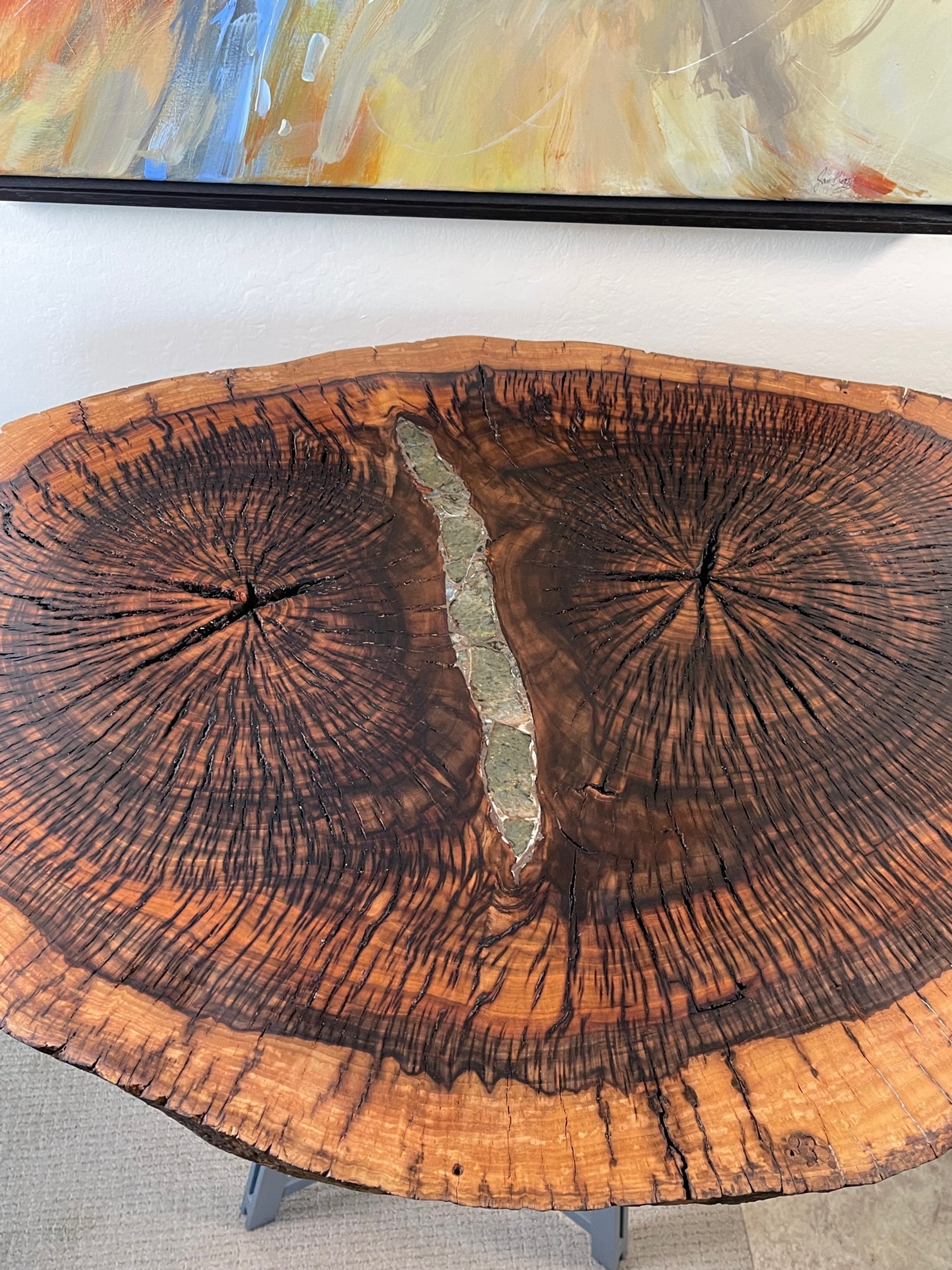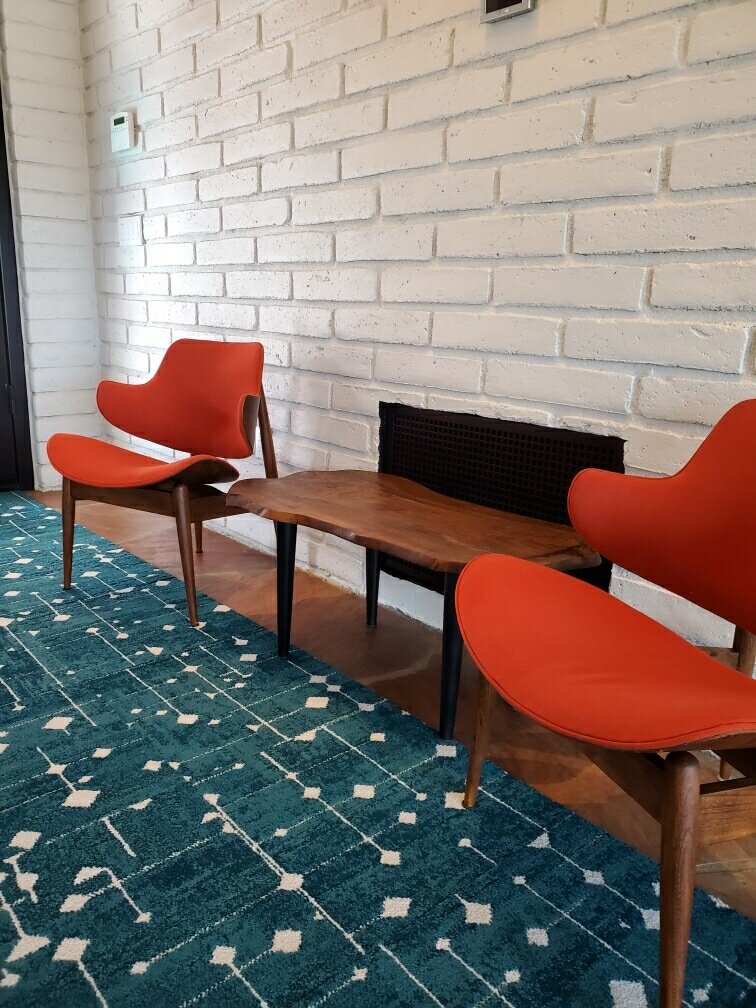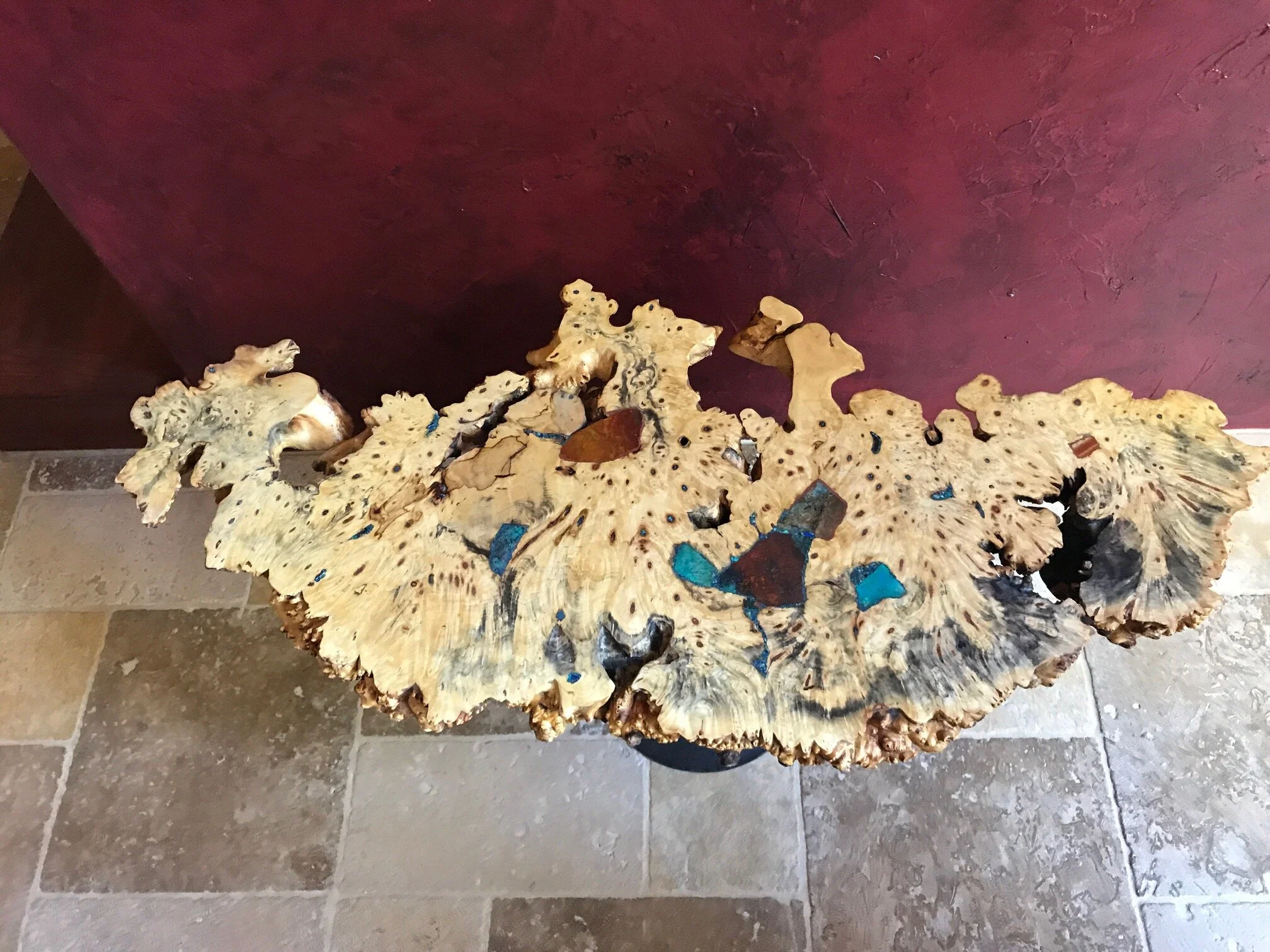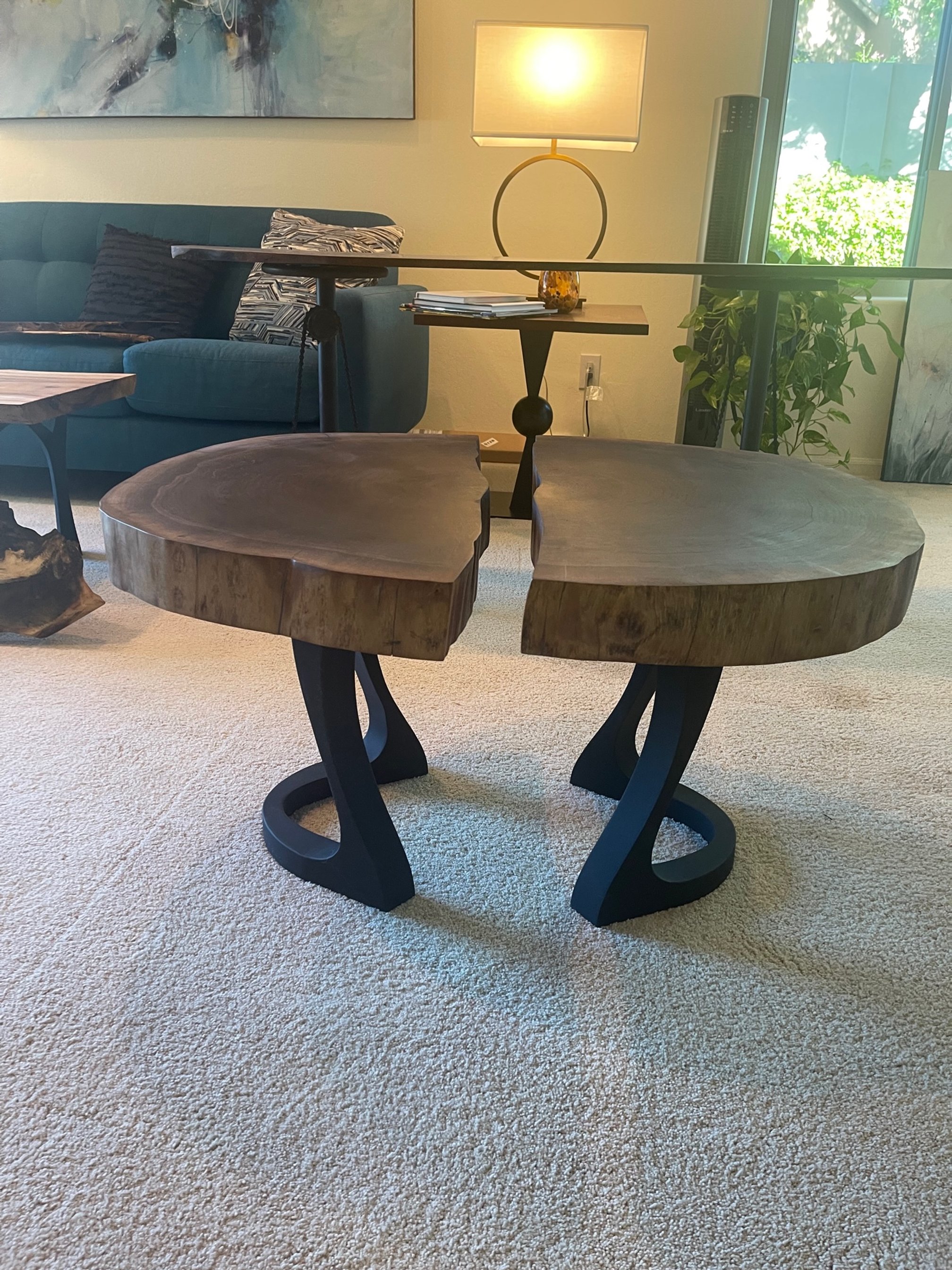Buckeye Burl Coffee Table with Lapis and Copper Inlay
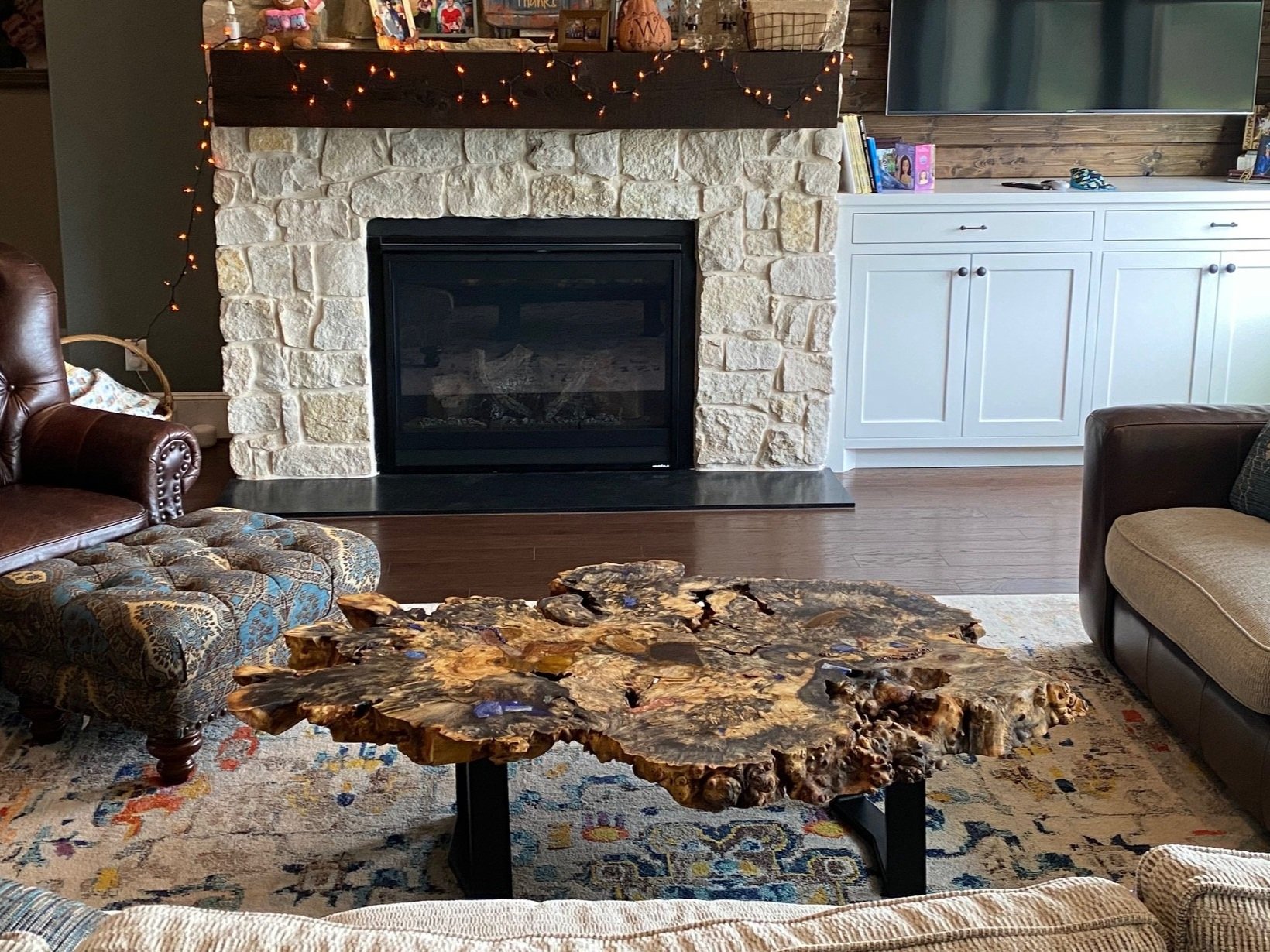







Buckeye Burl Coffee Table with Lapis and Copper Inlay
This Buckeye Burl end table has lapis, agate, jasper, copper/gold/silver slag, hammered copper, tiger’s eye jasper and yellow jasper and copper inlay. It is 64” x 42½” x 17”.
Buckeye Burl also known as Aesculus californica is native to California, southern Oregon and Ohio. It has swirling grain patterns with a mixture of blue, grey, black, and gold which blend in a beautiful color contrast. A burl is created when a tree encounters stress which may be from a virus, fungus, or an injury. Most burls grow under the ground attaching to the roots of the tree. This burl is from Northern California.
Lapis Iazuli is Latin for “stone sky”. It is commonly referred to as simply lapis, a metamorphic that is bright blue. The primary source of lapis is Afghanistan, but it is also mined in Russia, Peru, Italy, Canada, and The U.S. This lapis is from the San Antonio Canyon, which is north of Upland, CA. The inlay also includes a large piece of slag from the Rochester Basin in Montana. It is from old copper, gold and silver smelters in the 1860-1906 era. Slag is the runoff from refining the ore that solidified.
Jasper which means “speckled stone” and is an aggregate of quartz, chalcedony, and various minerals. Jasper can be brown, red, green, yellow, blue or a combination of those colors. Red is most common because of the iron content. Blue is considered rare. Tiger’s Eye jasper has a brown-golden silky luster. Agate is made up of cryptocrystalline silica with quartz. Agate is a variety of colors and is typically associated with volcanic rocks. Copper is very malleable and has a beautiful reddish-brown color. It is found in multiple states in the U.S. including Utah, Arizona, Montana, Michigan, and New Mexico.
The finish contains three coats of Tung oil; sanded after each coat. Tung oil brings out the unique characteristics of the wood. To maintain the beauty of the Buckeye burl avoid using cleaning solutions instead use water in a damp rag. Remove the excess moisture with a clean towel. Wood does expand and contract making it subject to slight checking, cracking, and movement. To minimize wood movement cracking, checking or slight warping and for polishing use a beeswax solution such as Howard Feed-N-Wax or Artisan Lemon Oil Wax is good. Just follow the directions from the manufacturer.
